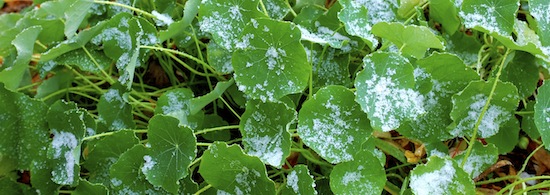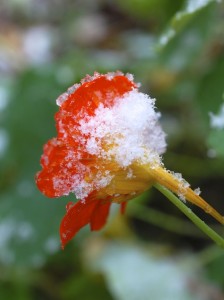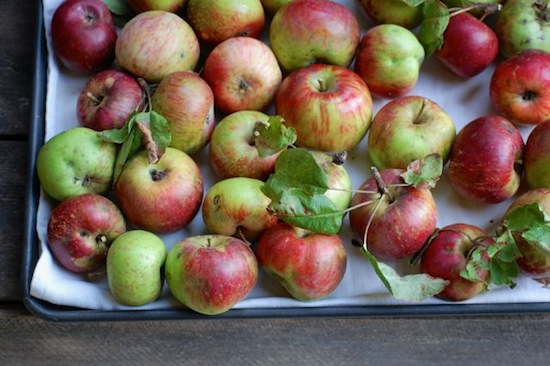 My obsession with gratins knows no limits. I once wrote a cookbook proposal called “Golden Brown and Bubbly: The Book of Gratins.” Honestly I don’t know why anyone didn’t pick that up. (Couldn’t have been the title.)
My obsession with gratins knows no limits. I once wrote a cookbook proposal called “Golden Brown and Bubbly: The Book of Gratins.” Honestly I don’t know why anyone didn’t pick that up. (Couldn’t have been the title.)
Now that golden-brown-and-bubbly season is back upon us, I figured I’d make it Gratin Week over on my Facebook page, Susie Middleton Cooks. Why not? If there can be a National Cupcake Day, then why not Gratin Week, I say. (A gratin is really just a vegetable and cheese casserole, after all.)
So I have been (and will be) posting a link to a different gratin recipe over there every day. Many of these recipes exist here at Sixburnersue.com or over on FineCooking.com, where my 11-year tenure (plus five years and counting as editor-at-large…okay I realize that makes me seem really old) has earned me multiple recipe listings. So linking to them is easy. (Try this favorite next summer.)
But today I thought I’d actually like to eat a gratin, rather than just talk about one. We’re having roast pork loin (yay, more pork—only 175 pounds left in the freezer!) for dinner, so I thought a classic creamy potato gratin would be nice. Of course I didn’t get around to making it until this afternoon so taking photos for the blog in the dying sunlight was a little tricky.
To do this recipe, I turned to the handy dandy “foundation recipe for baking gratins” in that fabulous cookbook, Fast, Fresh & Green. The recipe gives you a bunch of options, so I chose gruyère cheese, thyme, and horseradish as my flavor components. But then I also decided that I wanted to make a bigger gratin—just in case any of you need a pinch hitter for the Thanksgiving table. So I scaled the quantities up, and voilà, here you go. Yum. Happy Gratin Week.
Potato Gratin with Gruyère, Thyme & Horseradish
 Thinly sliced potatoes are key here, but there’s no need for a mandolin. Just cut your potato in half lengthwise first, lay it cut side-down on the cutting board (to stabilize) and then slice it crosswise with a sharp knife. A Santoku or ceramic knife works great.
Thinly sliced potatoes are key here, but there’s no need for a mandolin. Just cut your potato in half lengthwise first, lay it cut side-down on the cutting board (to stabilize) and then slice it crosswise with a sharp knife. A Santoku or ceramic knife works great.
Serves 6
1 teaspoon unsalted butter
1 cup fresh breadcrumbs
1 tablespoon extra-virgin olive oil
2 teaspoons roughly chopped thyme leaves
3 tablespoons coarsely grated Parmigiano
Kosher salt
1 cup heavy cream
3/4 cup low sodium chicken broth
2 teaspoons prepared horseradish
1½ pounds Yukon Gold potatoes (about 6 medium-small)
Freshly ground pepper
1 cup coarsely grated gruyère
Heat the oven to 350°F. Rub a 2-quart shallow gratin dish with the butter.
In a small bowl, combine the breadcrumbs with the olive oil, a big pinch of salt, ½ teaspoon of the thyme, and the Parmigiano.
In a liquid measure, combine the cream, the broth, and the horseradish. Mix well.
Cut the potatoes in half lengthwise and turn the halves cut-side down on a cutting board. With a sharp knife, slice the halves across as thinly as you can so that you have thin half-moon-shaped pieces.
Put the potatoes in a mixing bowl. Add 1 teaspoon salt, several grinds of fresh pepper, the cheese, the remaining thyme, and the cream mixture. Mix well. Transfer all to the prepared gratin dish.
Scooch the potatoes around until they are as evenly dispersed as possible. Using your palms, press down on the potatoes to bring the liquids up and around them as much as possible. (It won’t necessarily completely cover them.) Cover the top with the breadcrumb mixture. Bake until the potatoes are tender when pierced with a fork (check the middle of the dish as well as the sides), the breadcrumbs are brown, and the juices around the edges of the gratin have bubbled down and formed a dark brown rim around the edge, 65 to 70 minutes. Let cool for about 15 minutes before serving.






































































